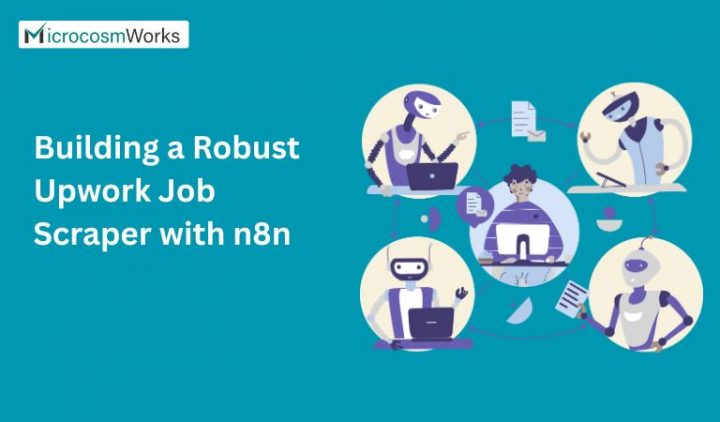In the realm of modern development and data analysis, the manual retrieval of information is inefficient. This article outlines a comprehensive, no-code solution to a common problem: automating the job search process. We will build a robust, self-maintaining workflow using n8n that scrapes new Upwork job postings, intelligently filters for duplicates, and delivers structured notifications to Slack.
This guide will focus on the technical implementation and the underlying logic of each node in the workflow, demonstrating how to build a production-ready data pipeline without writing custom code.
The Architectural Stack
Our solution is built on a stack of powerful, API-driven services:
- n8n: A workflow automation tool that serves as our orchestration layer, managing data flow and execution logic.
- Apify: A cloud-based web scraping platform. We will leverage its pre-built Upwork scraper as our data source.
- Google Sheets: A simple and accessible key-value store used to maintain state and prevent duplicate processing.
- Slack: A communication platform that will serve as our notification endpoint.
The Workflow: Node-by-Node Technical Breakdown
The workflow operates as a classic Extract-Transform-Load (ETL) pipeline, with a state management layer to ensure idempotency.
Step 1: Trigger and Scheduling
The workflow initiates with a Manual Trigger node. This enables on-demand execution, which is useful during the development and testing phases of the pipeline. The manual trigger provides full control over when the data extraction and processing logic are initiated..
Step 2: Data Extraction from API
The data extraction phase is handled by the Apify node. We configure this node to execute a specific web scraping actor (jupri/upwork). The node’s primary function is to make an API call to Apify, initiate the scrape job, and retrieve the resulting dataset. The output is a JSON array, with each object representing a single job posting.
Step 3: State Management (Data Retrieval)
To filter out duplicates, we must first retrieve the current state of our database. The Google Sheets node, configured with the Get row(s) operation, fetches all existing job URLs from a designated column in our sheet. The output of this node is a JSON array of records, which will be used in the subsequent filtering step.
Step 4: Iterative Processing
The Loop Over Items node is a fundamental control flow element. It takes the array of JSON objects from the Apify node and initiates a new execution branch for each item. This allows us to apply our data transformation and filtering logic to each job posting independently.
Step 5: Data Filtering and Transformation
The Remove Duplicates node performs the core filtering logic. It accepts two distinct data streams:
- The primary input from the Loop Over Items node (new jobs).
- The secondary input from the Google Sheets node (existing jobs).
The node compares a specified key (url from the new jobs) against a Get row(s) output. The result is a refined data stream containing only the job postings that have not been seen before.
Step 6: Load and Notification
For each unique job posting, the workflow performs a final pair of actions.
- Load to Database: A second Google Sheets node with the Append Row operation adds the new job to our sheet. This step updates our state database, ensuring the next workflow run will correctly identify this job as a duplicate.
- Structured Notification: The final Slack node constructs a rich, custom message using Slack’s Block Kit API. The JSON payload is dynamically populated using n8n expressions. This includes the use of:
- Ternary Operator: To handle conditional logic for budget fields (hourly_budget_min ? ‘hourly’: ‘fixed’).
- Array Methods: The .map() and .join() methods are used to transform the skills array into a human-readable string ([“Node.js”, “Python”] becomes “Node.js, Python”).
The final JSON sent to Slack is a highly structured document that renders a professional-looking message with a header, a two-column layout for tags and budget, and a clickable button.
Conclusion
This project demonstrates how a no-code platform can be used to build a sophisticated data pipeline for a practical purpose. By leveraging APIs, understanding data structures, and implementing core programming principles like state management and conditional logic, you can automate complex tasks and solve real-world problems. The skills learned here are transferable to any API-driven project, from data analysis to business automation.




